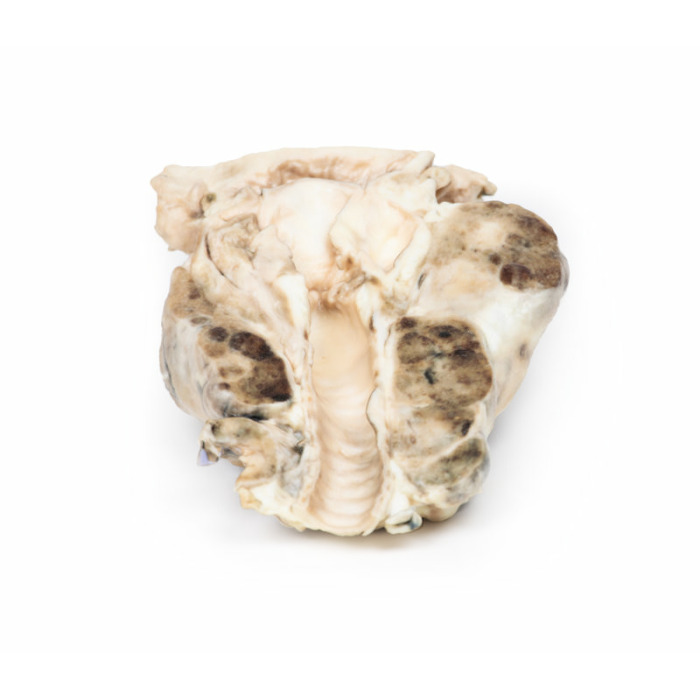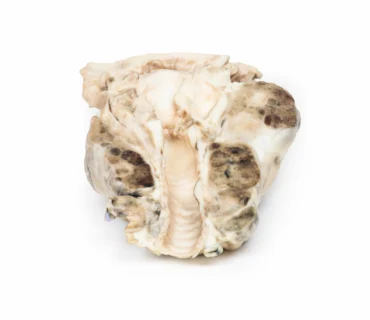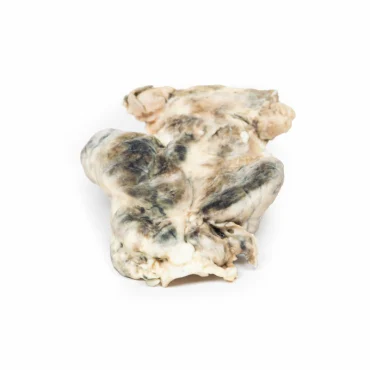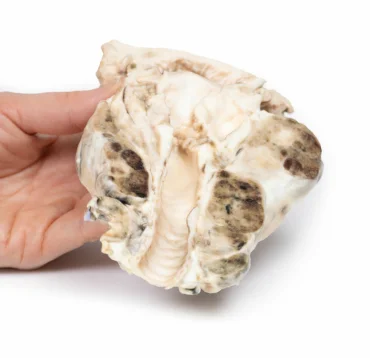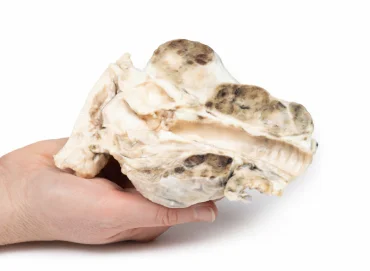MP2101 - Multinodular goitre
By buying you get
178 Points
More than a purchase. You get service and expert advice. Ask which products and combinations are recommended for you.
Clinical Presentation
A 53-year-old female presented with an abnormal swelling in the neck and a persistent cough. She complained of lethargy and weight gain over the previous few years. Whilst being investigated she died of unrelated cardiovascular disease several months later.
Pathology
The specimen, removed at post-mortem, includes the base of the tongue, larynx and trachea. It has been cut in the coronal plane to allow a view of the internal laryngeal and tracheal anatomy. The thyroid gland is grossly enlarged particularly the right lobe, which extends superiorly and inferiorly, well beyond its normal margins when viewed from the anterior aspect. The cut posterior surfaces display many hyper- and hypopigmented nodules as well as cystic areas in both lobes. The tongue base, larynx and trachea appear relatively normal.
Further information
Nodular goitre is most often detected simply as a mass or swelling in the neck but depending on size and location of growth may produce pressure symptoms on the trachea and the oesophagus. There may be difficulty in breathing, dysphagia, cough, and hoarseness. Paralysis of the recurrent laryngeal nerve may occur by an expanding goitre, but this is rare. Symptoms suggesting obstruction of the trachea including cough, stridor and shortness of breath may occur. Occasionally tenderness and a sudden increase in goitre size arise due to cystic expansion or haemorrhage into a nodule[1]. Causes of goitre include autoimmune disease (Hashimoto’s thyroiditis, Grave’s disease), the formation of one or more thyroid nodules and iodine deficiency. Goitre occurs when there is reduced thyroid hormone synthesis secondary to biosynthetic defects and/or iodine deficiency, leading to increased thyroid stimulating hormone (TSH). This stimulates thyroid growth as a compensatory mechanism to overcome the decreased hormone synthesis. Elevated TSH is also thought to contribute to an enlarged thyroid in the goitrous form of Hashimoto thyroiditis in combination with fibrosis secondary to the autoimmune process in this condition. In Grave’s disease, the goitre results mainly from stimulation by the TSH receptor antibody[1].
Reference
1. Hughes et al. (2012) Goitre: Causes, investigation and management. Aust Family Physician, 41, 572-576
- Quantitative unit
- ks
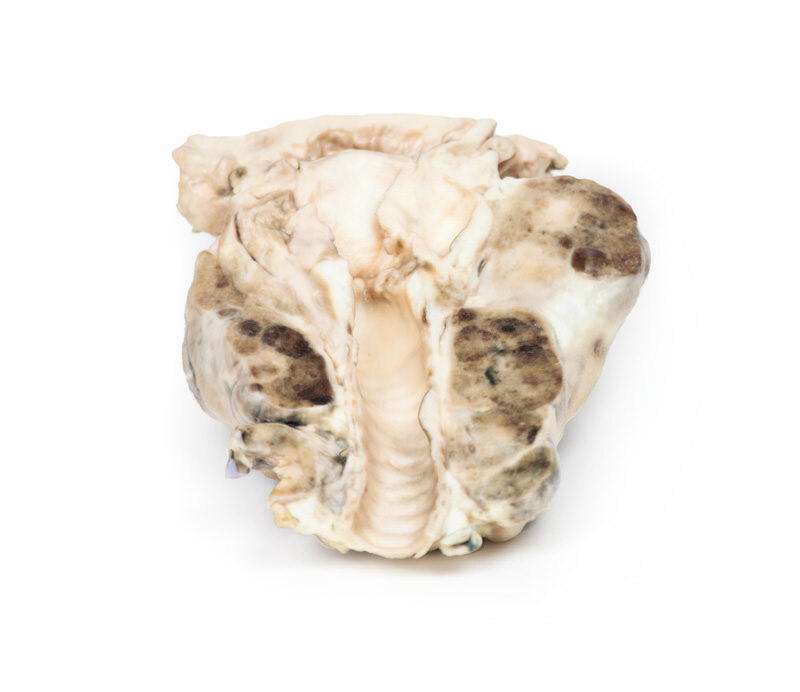
MP2101 - Multinodular goitre
